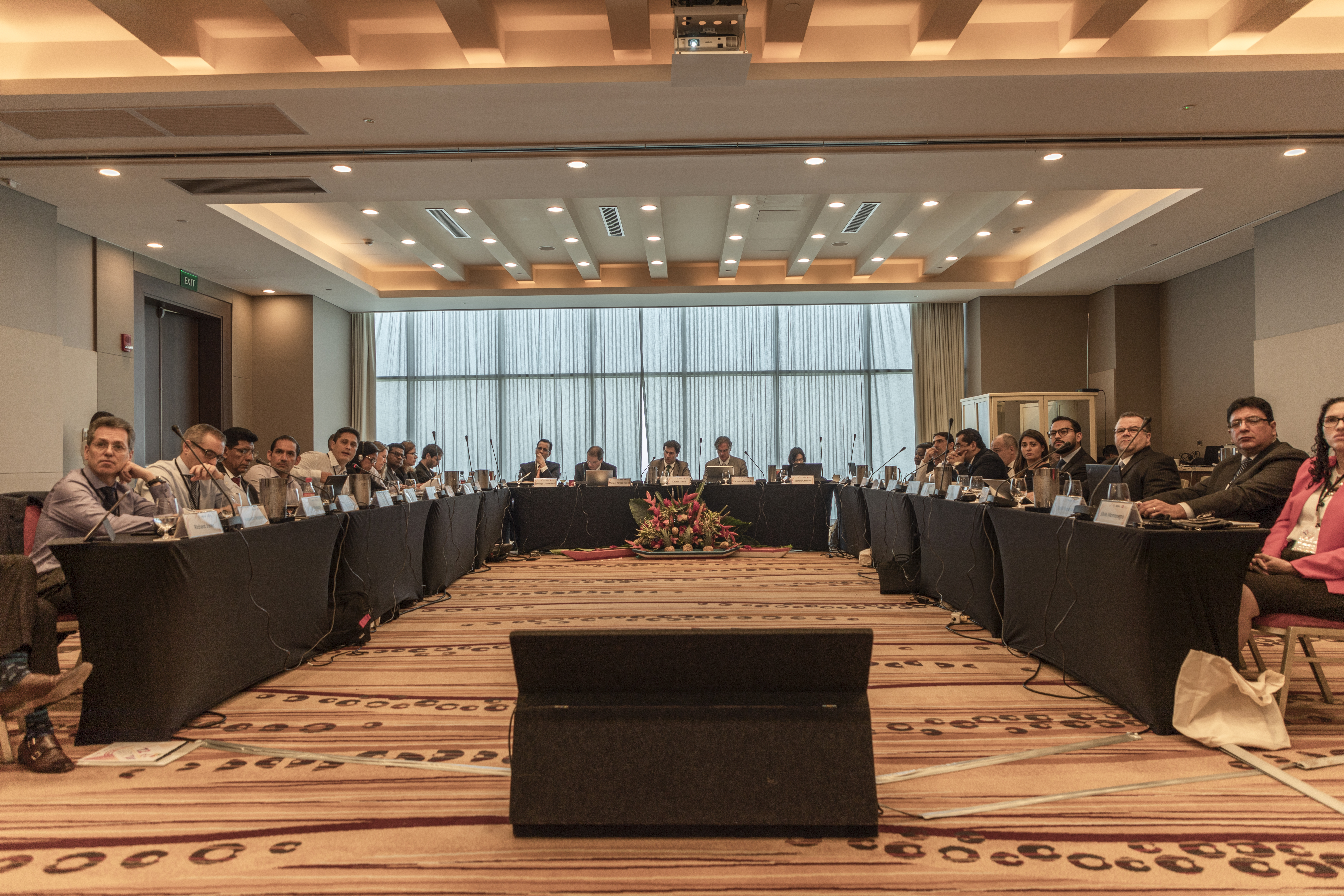XII BIS-CEMLA Roundtable:
Reserve Management and FX Intervention
June 17–18, 2019, Cartagena de Indias, Colombia
Welcome and opening remarks
Manuel Ramos-Francia (CEMLA)![]()
Andrés Murcia (Central Bank of Colombia) ![]()
Enrique Alberola (BIS)
Session I – Goals, benefits, and costs of reserve accumulation/draw downs
Chair: Manuel Ramos Francia (CEMLA)
Introductory presentations: CEMLA![]() and BIS
and BIS![]()
-
What have been the determinants of reserve accumulation in Latin America in the past decade? To what extent have FX reserves been accumulated for precautionary reasons and accumulated/drawn down as a byproduct of other policies (eg, maintaining price stability, financial stability, or export competitiveness), leading to FX intervention? Put differently, what have been the goals of FX interventions?
-
What is the best way to assess reserve adequacy? Are the best measures country-specific? Is it better to consider several measures simultaneously?
-
What have been the direct and indirect benefits of reserve holdings in recent years? How do these depend on structural features of the economy (eg, exposure to terms of trade shocks, degree of dollarisation, exchange rate and monetary policy regimes, etc)?
-
What are the costs of reserve holdings holding reserves? Have there been any unintended consequences of reserve accumulation? Does reserve accumulation support or weaken monetary policy or financial stability objectives? For instance, has reserve accumulation helped to “lean against” capital inflows or reinforced them by being perceived as a form of insurance? Do these implications vary with the time horizon?
-
What are the alternatives to reserve accumulation? To what extent can macroprudential tools or capital flow measures help? How have changes in the global financial safety net and regional arrangements impacted the optimal level of reserves?
Session II – FX interventions: intermediate objectives, strategies, and tactics
Chair: Manuel Ramos Francia (CEMLA)
Introductory presentations: CEMLA![]() and BIS
and BIS![]()
-
What are the intermediate objectives of FX intervention (eg, limit exchange rate volatility, providing liquidity, etc)? How do they relate to the ultimate goals? Why has the objective of providing liquidity to thin markets gained in importance?
-
Which are the preferred instruments and modalities for intervention? If you use more than one, are they used as complements or substitutes? To what extent have the ways to intervene evolved? If so, why? What has been the influence of algorithmic trading?
-
How effective have interventions been? Why? Does it matter whether the exchange rate is appreciating or depreciating? What do you regard as the main economic mechanisms through which interventions operate? How is their effectiveness measured?
-
Which are your intervention criteria? Are interventions rule-based or discretionary? Which are the benefits and drawbacks of each? Have they changed in recent years? Is the effectiveness of interventions enhanced or hampered by transparency? If transparency is helpful, what information is usefully communicated to markets and when (ie, ex ante or ex post)?
-
What factors, including objectives or circumstances (eg, nature of the shocks, appreciation of depreciation pressures, etc), influence the choice of (i) instruments and markets; (ii) timing, market conditions and size; (iii) counterparty choice or platform; and, (iv) sterilisation instruments? What is the role of on-shore versus off-shore markets?
-
To what extent are interventions influenced by the operation of other public sector entities (eg, sovereign wealth funds, pension funds, fiscal stabilization funds, etc)?
Keynote Lecture – Strategic Asset Allocation: Peering into the future with the help of market prices ![]()
Lecturer: Gerardo García López, Director of International Operations, Bank of Mexico
Chair: Enrique Alberola (BIS)
Session III – Reserve management
Chair: Enrique Alberola (BIS)
Introductory presentations: BIS![]() and CEMLA
and CEMLA ![]()
-
Which overall motivations guide the composition of your reserve portfolios? How can various motivations best be balanced? How does the strategic asset allocation reflect that balance? Is there any link between the portfolio composition and intervention strategies?
-
What have been the most important shifts in the composition of reserves over the past decade (eg, expansion into new asset classes, shifts in currency composition)? In prompting these shifts, what has been the role of changes in mandates/laws, in risk preferences, in the macro-financial environment, and in other factors? Has the search for yield been a significant consideration?
-
How do you organise the management of your reserves? Has the outsourcing to private reserve managers increased? Is there evidence of procyclical investment behaviour by reserve managers, and if so, might it significantly amplify reserve liquidations and spillovers? How might undesired consequences be reduced (eg, through accounting frameworks or governance arrangements)?
-
Have there been important changes to disclosures over the past decade? If so, what have been the trade-offs? How do these differ from disclosure trade-offs related to FX intervention? What effects have disclosures had?
-
How far are reserve management practices constrained by political economy considerations (e.g., impact of losses on reputation, the central bank’s equity or profit distribution)? What arrangements or practices can help manage these risks (e.g., communication vis-à-vis Treasury; loss-sharing arrangements, etc)?
Conclusions
Manuel Ramos-Francia (CEMLA) ![]()
Andrés Murcia (Central Bank of Colombia)
Enrique Alberola (BIS).


